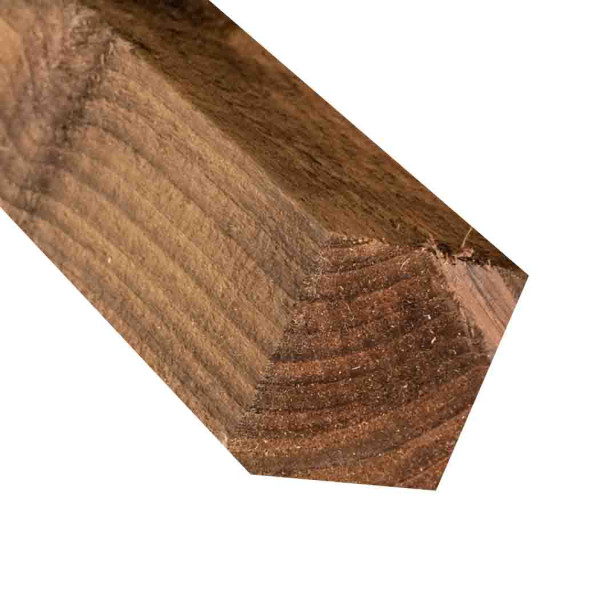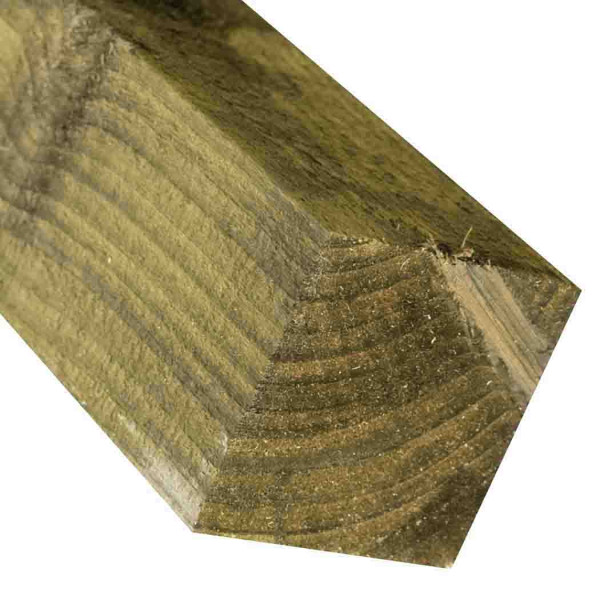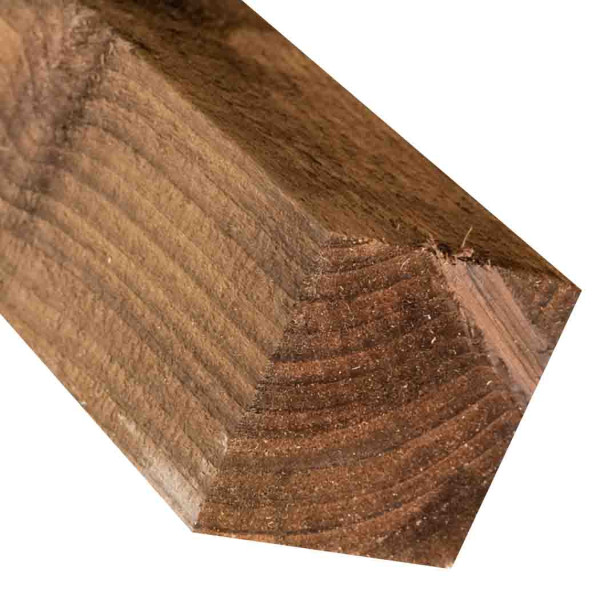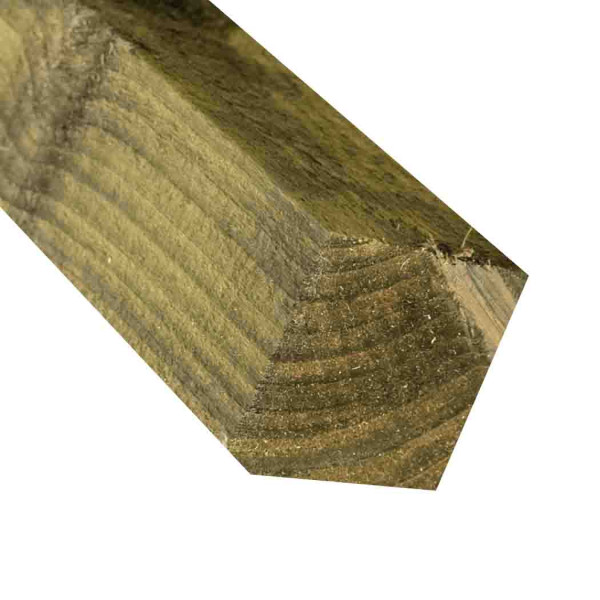Wooden Fence Posts
1.8M x 75 x 75mm Wooden Fence Post - Pressure Treated Brown is a dependable square timber post designed to support a wide range of light to medium-duty fencing. The 75 x 75mm section offers balanced strength and ease of handling, while the 1.8m length suits common residential fence heights when installed at an appropriate depth.Brown pressure t..
from
£7.49 £8.29
Ex Tax:£6.242.4M x 75 x 75mm Wooden Fence Post - Pressure Treated Brown is a versatile square timber post designed to support light to medium-duty fencing with extra embedment depth for stability. The 75 x 75mm section balances strength with ease of handling, while the 2.4m overall length suits taller boundaries, sloping sites or runs that incorporate gravel b..
from
£10.49 £11.49
Ex Tax:£8.742.4M x 100 x 100mm Wooden Fence Post - Pressure Treated Green is a heavy-duty square timber post designed to provide long-term support for taller fencing and demanding gate applications. The substantial 100 x 100mm section delivers excellent rigidity, while green pressure treatment equips the timber for sustained outdoor exposure with minimal upkee..
from
£18.49 £19.99
Ex Tax:£15.412.4M x 100 x 100mm Wooden Fence Post - Pressure Treated Brown is a heavy-duty square timber post engineered to deliver long-term support for taller garden fencing and demanding gate applications. Its substantial section provides excellent rigidity, while the brown pressure treatment offers reliable protection for year-round outdoor use and a warm, ..
from
£18.49 £19.99
Ex Tax:£15.411.8M x 100 x 100mm Wooden Fence Post - Pressure Treated Brown is a heavy-duty square timber post designed to provide strong, reliable support for garden fencing and gates. With a 100 x 100mm section and 1.8m length, it offers excellent rigidity for standard residential fence heights while delivering a warm brown finish that blends naturally with ot..
from
£13.99 £14.99
Ex Tax:£11.661.8M x 75 x 75mm Wooden Fence Post - Pressure Treated Green is a reliable square timber post designed to support light to medium-duty garden fencing, trellis and small gates. The 75 x 75mm profile balances strength with easy handling, while the 1.8m length suits typical residential fence heights when installed at an appropriate depth.Green pres..
from
£7.49 £8.29
Ex Tax:£6.243.0M x 75 x 75mm Wooden Fence Post - Pressure Treated Green is a versatile square timber post suited to light and medium-duty fencing where extra embedment depth is beneficial. The 75 x 75mm section balances strength with manageable weight, while the extended 3.0m length improves stability on exposed sites, uneven ground or runs that incorporate gr..
from
£12.99 £13.99
Ex Tax:£10.833.0M x 100 x 100mm Wooden Fence Post - Pressure Treated Green is a heavy-duty square timber post designed for taller or more demanding fencing and gate installations. The substantial 100 x 100mm section provides excellent rigidity, while the extended 3.0m length allows deeper embedment for stability on exposed sites, uneven ground or runs incorpora..
from
£22.99 £24.99
Ex Tax:£19.163.0M x 100 x 100mm Wooden Fence Post - Pressure Treated Brown is a heavy-duty square timber post designed for taller or more demanding fencing and gate installations. The substantial 100 x 100mm section provides excellent rigidity, while the extended 3.0m length allows deeper embedment for stability on exposed sites, uneven ground or runs incorpora..
from
£22.99 £24.99
Ex Tax:£19.162.4M x 75 x 75mm Wooden Fence Post - Pressure Treated Green is a versatile square timber post designed to support light to medium-duty fencing with additional embedment depth for stability. The 75 x 75mm section balances strength with easy handling, while the 2.4m overall length is ideal for taller boundaries, exposed sites or runs that include gra..
from
£10.49 £11.49
Ex Tax:£8.743.0M x 75 x 75mm Wooden Fence Post - Pressure Treated Brown is a versatile square timber post designed for light to medium-duty fencing where extra embedment depth is required. The 75 x 75mm section balances strength with manageable weight, while the extended 3.0m length improves stability on exposed sites, uneven ground or runs that incorporate gr..
from
£12.99 £13.99
Ex Tax:£10.831.8M x 100 x 100mm Wooden Fence Post - Pressure Treated Green is a heavy-duty square timber post designed to provide strong, dependable support for garden fencing and small gates. The 100 x 100mm section offers excellent rigidity, while the 1.8m length suits common residential fence heights when set in an appropriate footing.Green pressure trea..
from
£13.99 £14.99
Ex Tax:£11.66Showing 1 to 12 of 12 (1 Pages)






